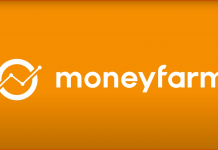The following masternode opportunities have been selected based not only on ROI, but on long-term stability. While other coins offer higher returns, the jury is still out on many of them and only time will tell how they fare.
Here are ten masternode coins to consider, listed according to market cap.
Dash (DASH) – 7.02%
With a market cap of almost $2 billion, and 4,660 masternodes, Dash can appear a very attractive investment for stakers. However, its long-term security is offset by the highest masternode cost in existence at $238,890. In early January those masternodes were worth over $1.5 million.
A minimum stake in a Dash masternode will net you $16,770 per year.
PivX (PIVX) – 6.60%
A PivX masternode will set you back 10,000 PIVX coins, equating to a $19,050 buy in. In return for your stake, you can expect to receive $1,257 a year.
Like Dash, what PivX lacks in ROI it makes up for in long-term stability. PivX has been around since early 2016, and currently has 1,971 masternodes up and running.
Syscoin (SYS) – 11.57%
Syscoin is a blockchain-based decentralized marketplace which has been around since 2014 and made its big push into the market cap top-100 in 2017, where it has held ground ever since.
A SYS masternode will cost you $18,000 but will pay back $2,088 per year in return, or around $174 per month. There are currently 1,123 Syscoin masternodes operational.
Zcoin (XZC) – 14.25%
Zcoin launched in 2016 with a coin price of $0.36 and has reached a value of $16.38 today. One of the first coins to implement the Zerocoin protocol, XZC is currently at its lowest price since November 2017.
Yet a masternode which costs $16,460 will still earn you $2,345 a year on this Top-100 privacy coin.
SmartCash (SMART) – 47.44%
Only 10,000 SMART coins are required for a masternode, and at the current price of $0.07, that works out at around $700.
Due to its low buy-in, SmartCash currently has the largest number of masternodes in operation, a total of 15,285. A minimum stake in a SMART masternode can earn you $333 per year. SmartCash has both the lowest node cost and highest ROI on this list.
Blocknet (BLOCK) – 15.15%
Blocknet launched in late 2014 and remained obscure until its bull run of 2017. The number 114th ranked coin in the world demands $69,000 worth of BLOCK coins to run a masternode, equating to 5,000 coins priced at around $13.81.
For that minimum stake, expect to see healthy yearly returns of $10,453.
StakeNet (XSN) – 37.95%
StakeNet has grown 40% in value since its launch date back in April and is offering almost the same returns to its masternode owners based on a minimum stake of $8,345. That equates to yearly rewards of $3,166.
StakeNet has 1,418 masternodes running at the time of writing and is ranked 180th on CoinMarketCap, with a general upward trend since April.
ION (ION) – 26.74%
20,000 ION coins at the current price of $0.92 are required to set up your own masternode – amounting to a dollar cost of $18,447. Based on that stake amount you’d earn around $4,932 based on the current rewards.
ION coins reached a price of $7.12 in January – 673% more than their current value.
Phore (PHR) – 37.80%
Phore’s $750,000 daily volume at the time of writing is more than typical coins around the Top-300 mark and even outperforms Top-100 coins.
A masternode requires a PHR stake of around $12,657, based on 10,000 coins at $1.2657. A minimum stake will reap returns of around $4,784 per annum.
Kore (KORE) – 29.40%
Kore has been around for four years now but only took off during the market upturn of 2017. The minimum stake amount for a Kore masternode is a very reasonable $901 – a sum which would return $264 per year.
KORE coins are currently at a 10 month low, with the $1.63 price not being reached since August of last year, although there are still 238 masternodes up and running.
If you think masternode investing is the right choice for you, start watching our masternode listing here on www.investitin.com. This article does not constitute investment advice and should be accompanied by your own due diligence.











